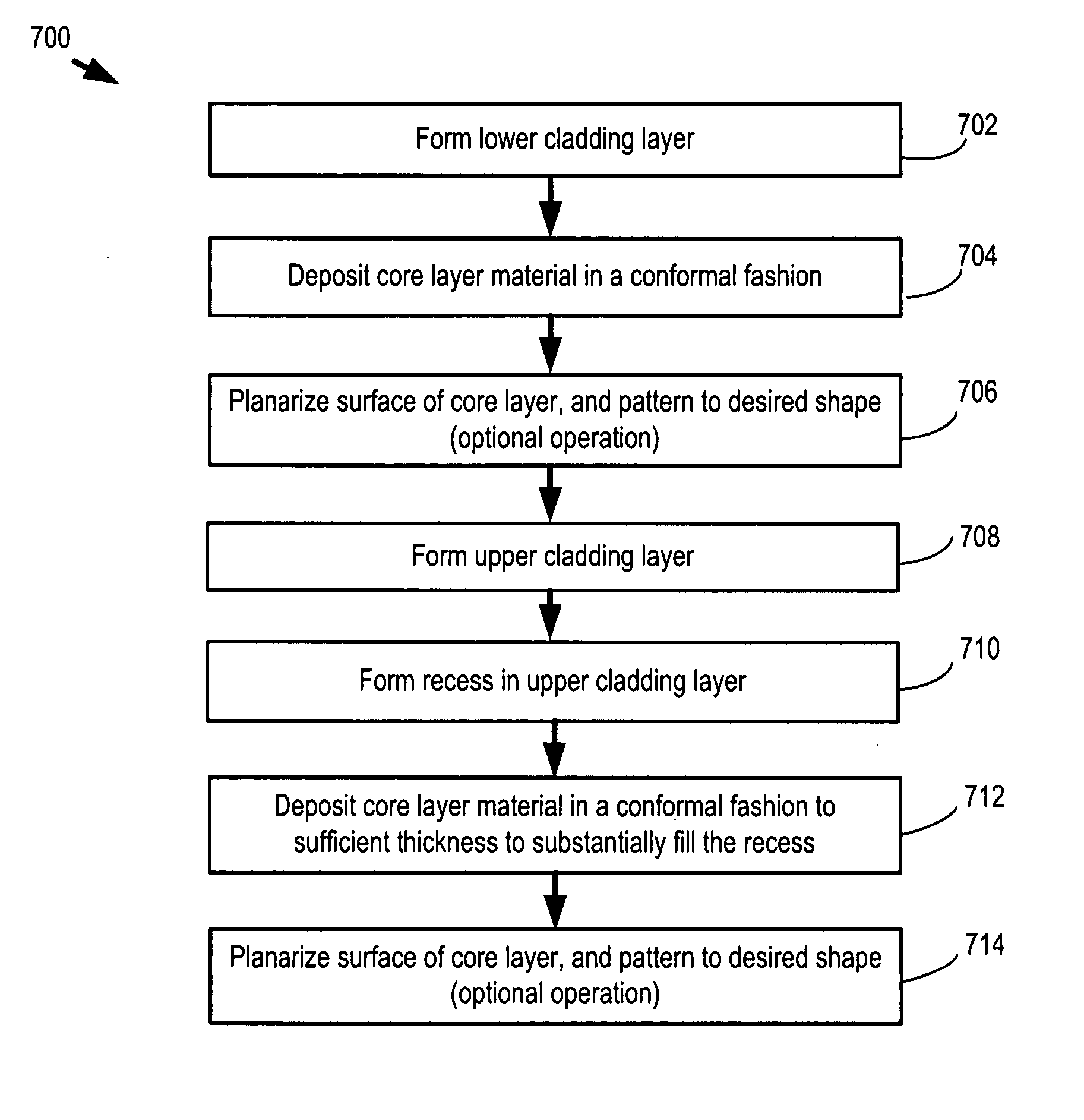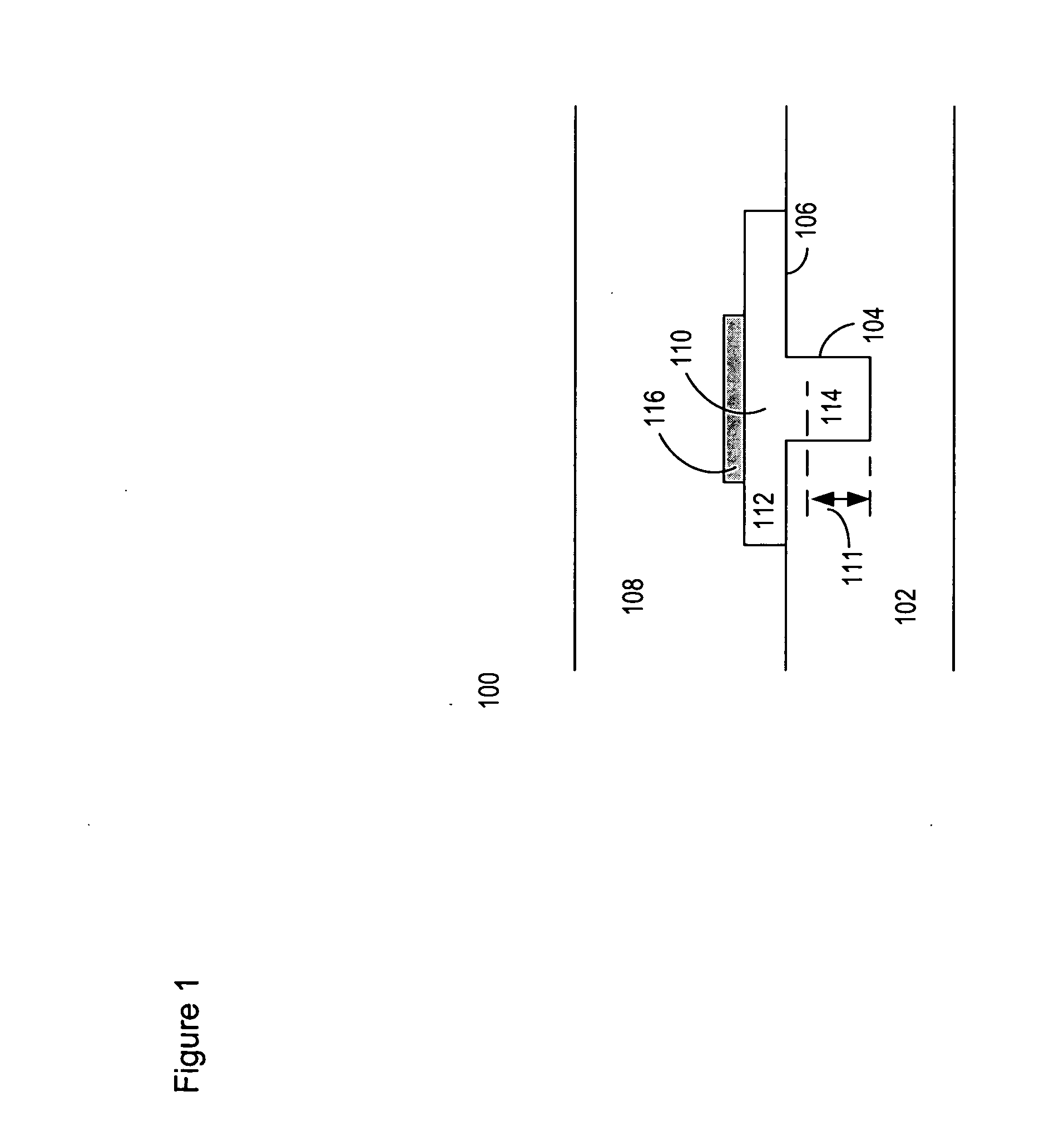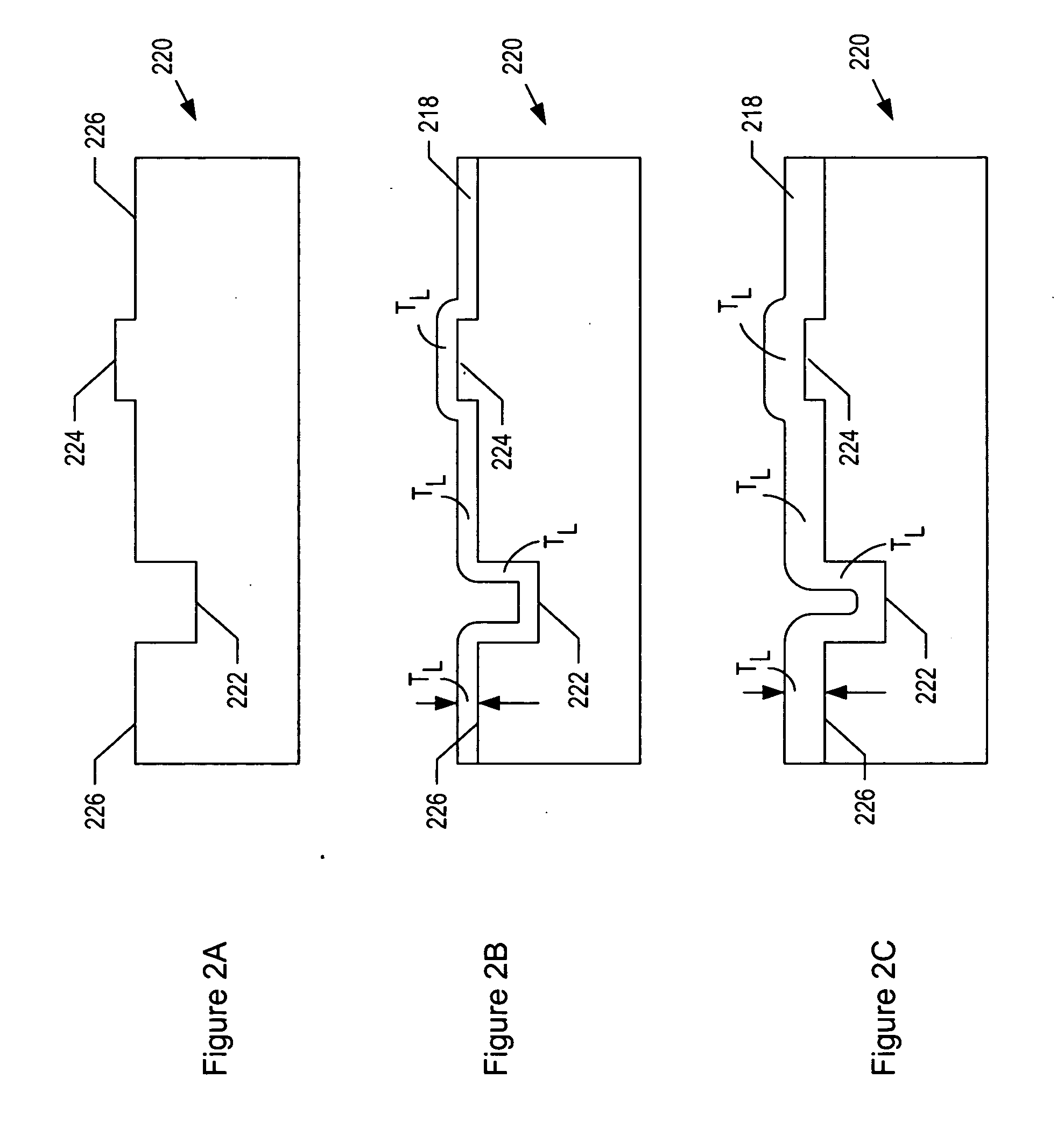Surface waveguide and method of manufacture
a surface waveguide and waveguide technology, applied in the field of optical waveguides, can solve the problems of increasing the magnitude of residual stress, increasing the induced strain, and many lpcvd-deposited thin films
- Summary
- Abstract
- Description
- Claims
- Application Information
AI Technical Summary
Benefits of technology
Problems solved by technology
Method used
Image
Examples
Embodiment Construction
[0026]FIG. 1 depicts a cross-sectional view of a portion of inverted-ridge waveguide 100 in accordance with the illustrative embodiment of the present invention. Inverted-ridge waveguide 100 comprises core 110, lower cladding 102, and upper cladding 108.
[0027] Lower cladding 102 has a generally planar surface, with the exception of recess 104. The surface of lower cladding 102 on either side of recess 104 is referred to as “field region”106.
[0028] Core 110 comprises slab 112 and inverted ridge 114. The inverted ridge is disposed in recess 104. As described later in this specification, the width and height of inverted ridge 114 are determined by the width and depth of recess 104.
[0029] In the illustrative embodiment, inverted-ridge waveguide 100 includes optional layer 116 of electro-optically-active material. In some embodiments layer 116 is disposed on core 110. In such embodiments, layer 116 is functionally part of the core since it supports propagation of the optical signal. I...
PUM
| Property | Measurement | Unit |
|---|---|---|
| temperatures | aaaaa | aaaaa |
| critical thickness | aaaaa | aaaaa |
| critical thickness | aaaaa | aaaaa |
Abstract
Description
Claims
Application Information
 Login to View More
Login to View More - R&D
- Intellectual Property
- Life Sciences
- Materials
- Tech Scout
- Unparalleled Data Quality
- Higher Quality Content
- 60% Fewer Hallucinations
Browse by: Latest US Patents, China's latest patents, Technical Efficacy Thesaurus, Application Domain, Technology Topic, Popular Technical Reports.
© 2025 PatSnap. All rights reserved.Legal|Privacy policy|Modern Slavery Act Transparency Statement|Sitemap|About US| Contact US: help@patsnap.com



